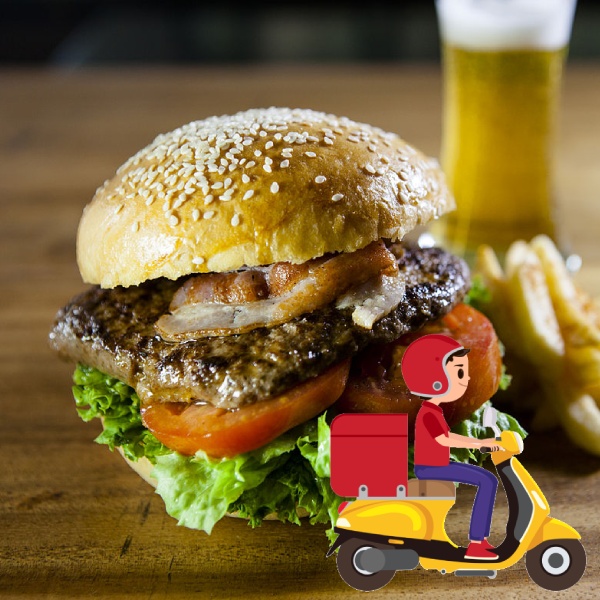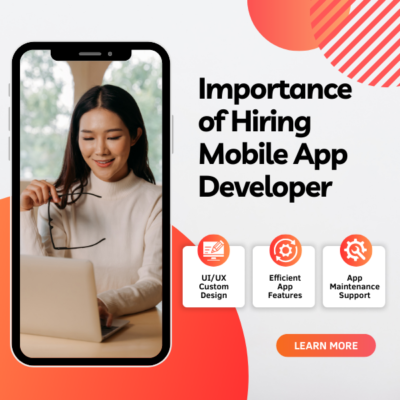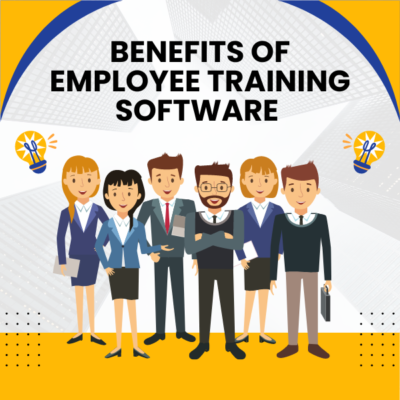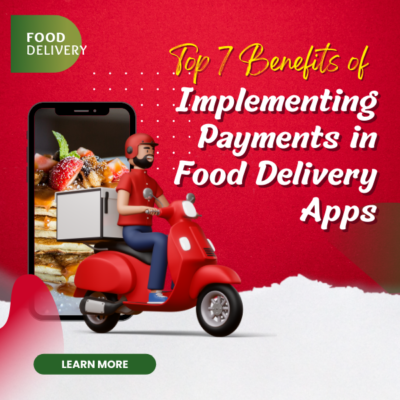The craving for delicious food among people has reached an all-new level today. While earlier whenever anyone desired to treat themselves with their much-loved outside food, they were bound to get it delivered in a traditional way which is time taking process OR to send someone to fetch the order.
Advancement in mobile computing and mobile apps has made the on-demand food delivery process effortless and faster. Around the world, the vast majority of food delivery services are mostly run through mobile apps ranging from the big ones having a nation or continent-wide presence to the delivery services that cater to the population of a single state or region.
Table of Contents
Growing Food Delivery Industry Inviting More Investors

- Revenue in the Online Food Delivery segment amounts to US$107,438m in 2019.
- Revenue is expected to show an annual growth rate (CAGR 2019–2023) of 9.9%, resulting in a market volume of US$156,819m by 2023.
- The market’s largest segment is Platform-to-Consumer Delivery with a market volume of US$53,786m in 2019.
- In global comparison, most revenue is generated in China (US$40,239m in 2019). Source
- The food delivery services like GrubHub, UberEATS, DoorDash, and Postmates are transforming the way people get their meals. In 2017, Grubhub had nearly $4 billion in gross sales. UberEATS had 8.7 million active mobile app users as of Q1 in 2017, despite being one of the youngest delivery apps.
- Other than the big 4s, the top of 10 Food & Delivery apps are Amazon, Swiggy, Food Panda, Zomato, Deliveroo, Domino’s Pizza, Just Eat, Caviar and Eat24.
Growing food delivery industry inviting more and more business professionals and investors to invest and secure an ample chunk out of growing food delivery domain. Various business models that can be adopted by the start-ups in an attempt to take food delivery business concept to new heights are as follows:

Order Only Business Model
In this type of business model, you let restaurant owners handle the delivery services by themselves. The only responsibility of your on-demand food delivery business is to take the orders from the users and share those orders with the respective restaurants. The restaurant prepares the meal and delivers that meal to the user through its own team of delivery drivers. This model is followed by food delivery companies like Grubhub, Food Panda, Just Eat

Food Ordering Process:
The methodology or the process adopted for receiving and communicating the orders to the restaurant works in the following manner:
- Customer-first places an order on the website / mobile app.
- The restaurant gets the notification. And they can accept and reject orders according to the availability of ingredients.
- In some cases, these companies integrate into the restaurant’s POS system and print the order directly into the kitchen.
Delivery Process:
As it is an Order only model, it requires restaurants to arrange delivery facilities by themselves.
Limitations of this model:
- Since the commissions are the major revenue stream for ordering platforms, they must put extra effort into reaching out to as many eateries as possible, including small local restaurants.
- In the beginning, it could be really hard to attract customers. By targeting smaller areas and delivering the best can help in increasing the market presence. Also, an effective PR campaign can help in attracting new restaurants.
Order and Delivery Model
If you decide to follow the order and delivery model, you have to handle the logistics for the restaurants. Since restaurants don’t have to invest in delivery service and food delivery companies can create more revenue streams by letting restaurants utilize their delivery service, the order and delivery model is beneficial for both.
Top on-demand food delivery service provider companies like Postmates, UberEat, Door Dash, Deliveroo are following this model. They allow anyone to be the delivery driver by just registering. Now, when a user orders the food, a nearby driver is also notified to pick up and deliver the food. Food delivery companies pay these drivers based on the distance they travel to complete a delivery.
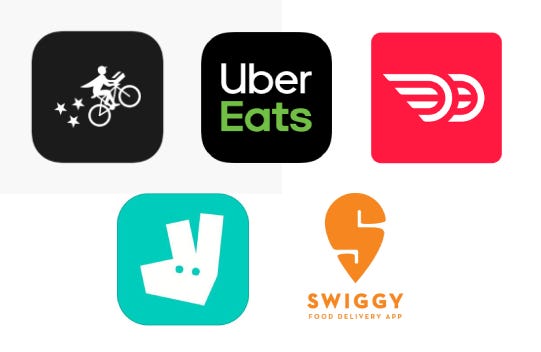
Food Ordering Process:
- The orders are received in the app or website where menus of different restaurants are uploaded. When an order is received by the restaurant from the food delivery app or website, the restaurant then notifies the courier provider of the time to pick up the parcel and destination address.
- Although the delivery service commission fee is charged both from the restaurants and the customers. The delivery charge is added with the final price of the items added in the cart by the customers. Order and delivery services cut 20 to 30 percent on the cost of each order and may charge a flat delivery fee to customers
Delivery Process:
- The delivery process is the most challenging job in this model. The delivery time matters most for customers. Delivery speed is a key factor of satisfaction for 60 percent of all customers. The delivery executives get the orders as per their geo-location. Once a user has submitted the order the nearest delivery executive is searched as per the location and the job is assigned.
Limitations of this model:
- Arranging an efficient delivery system is the major challenge in the order and delivery model. However, a point-to-point delivery network can overcome this challenge. In point to point delivery network, the system implements algorithms that assign the order to the driver closest to the restaurant.
Fully Integrated Model:
Without any doubt, a full-service food delivery model is where you have a great level of control over customer experience. Like, you can manage everything, starting from the food that is being served to them, ensuring it is fresh and delicious, and also the orders are timely delivered. After all, you are certain to benefit from having your own chefs & delivery people. When combined with ratings & feedback, you have great potential to enhance your services all the more. This model is adopted by Domino’s, Spoonrocket,

Food Ordering Process:
- The customer adds the item in the cart.
- Makes the payment for the order.
- The order is accepted by the restaurant.
- Food gets prepared.
- Then the delivery executive is assigned and the same information is also shared with the customer so that they can track the order.
- The estimated turnaround time is shared with the customer.
- The order is successfully delivered to the customer.
Delivery Process:
Delivery is through drivers employed by the restaurants or the food start-ups. The delivery methods that can be opted are:
Scheduled Delivery:
Preorder availability depends on when a restaurant is open and how much time is required to prepare the order. You’ll only be able to schedule orders for times and dates the restaurant can fulfill, or you can search for restaurants based on a particular time.
Instant Delivery:
This delivery option can be used to deliver the set of combo meals that can get ready quickly. Also in this type of delivery, the executives try to be as quick as possible so as to facilitate the customer with the orders in the promised time.
Limitations of this model:
- The major challenge that this model faces is its high operating costs.
- Mostly a brand that has its chain outlets or restaurants like Dominos needs to deliver the ingredients to every outlet on a regular basis.
- l Also, efficient employees are required for management and for delivery.
- l Along with this vehicle that is used for delivery their maintenance and fuel expenses add up in the operational costs.
Which one is the most beneficial food delivery business, model
- Hence, it is believed that the Order and Delivery Model offers tremendous benefits to all the parties involved — such as customers, restaurants, and delivery service startup, thus, the most adopted delivery model across the globe
- Restaurants get to enlarge their present user base and also utilize existing kitchen facilities the most. This will ultimately lead to more revenue and business growth.
- Customer benefits consist of easy selection, convenience, and promptness in delivery. They can choose from wide-ranging cuisines offered by numerous restaurants.
- And then in the case of delivery executives, it is beneficial in the long run to work with larger food delivery businesses to attain a higher average order size as compared to aggregators.
Conclusion:
Hence before opting for any food delivery business model, intense research needs to be done to get successful results after the implementation. The market study helps in adopting the best strategies, the right mobile app development partner, and the business model for your food delivery business.
